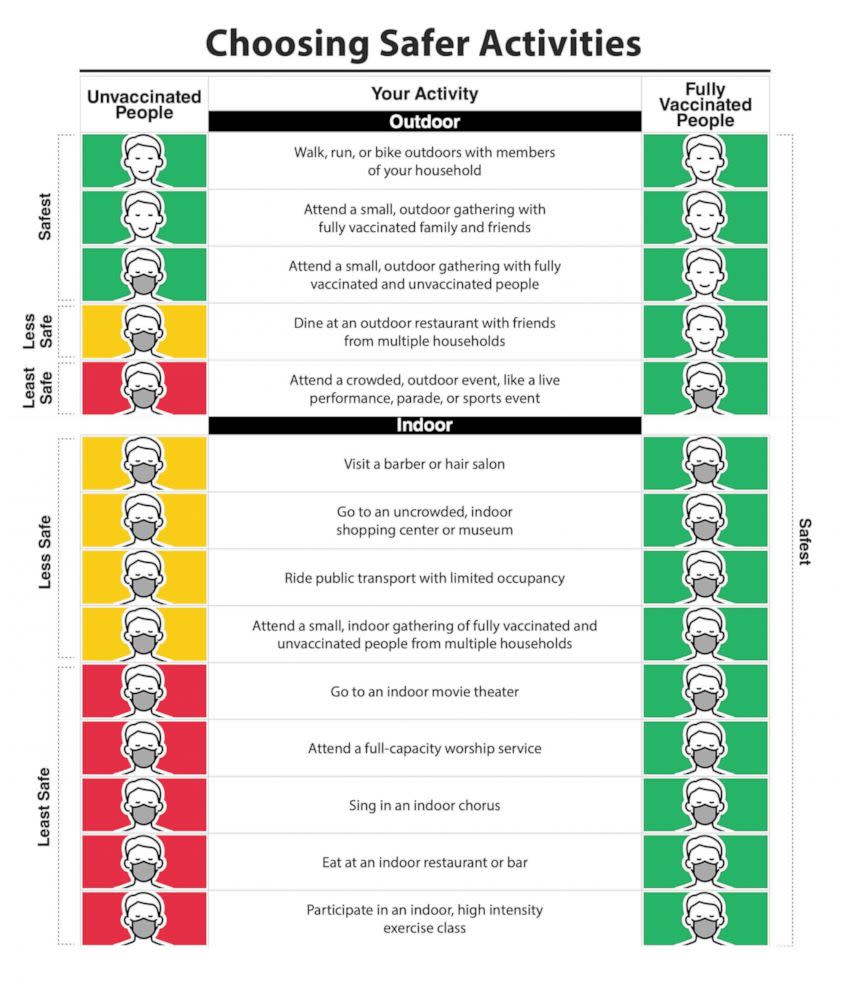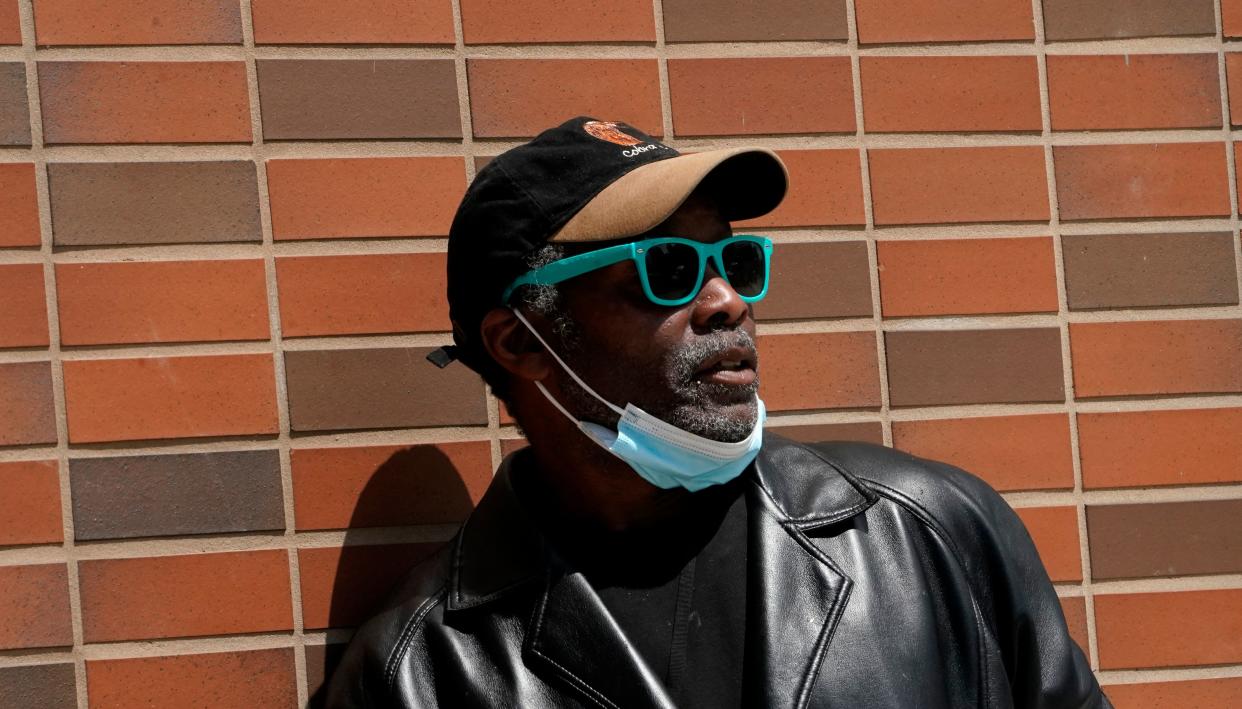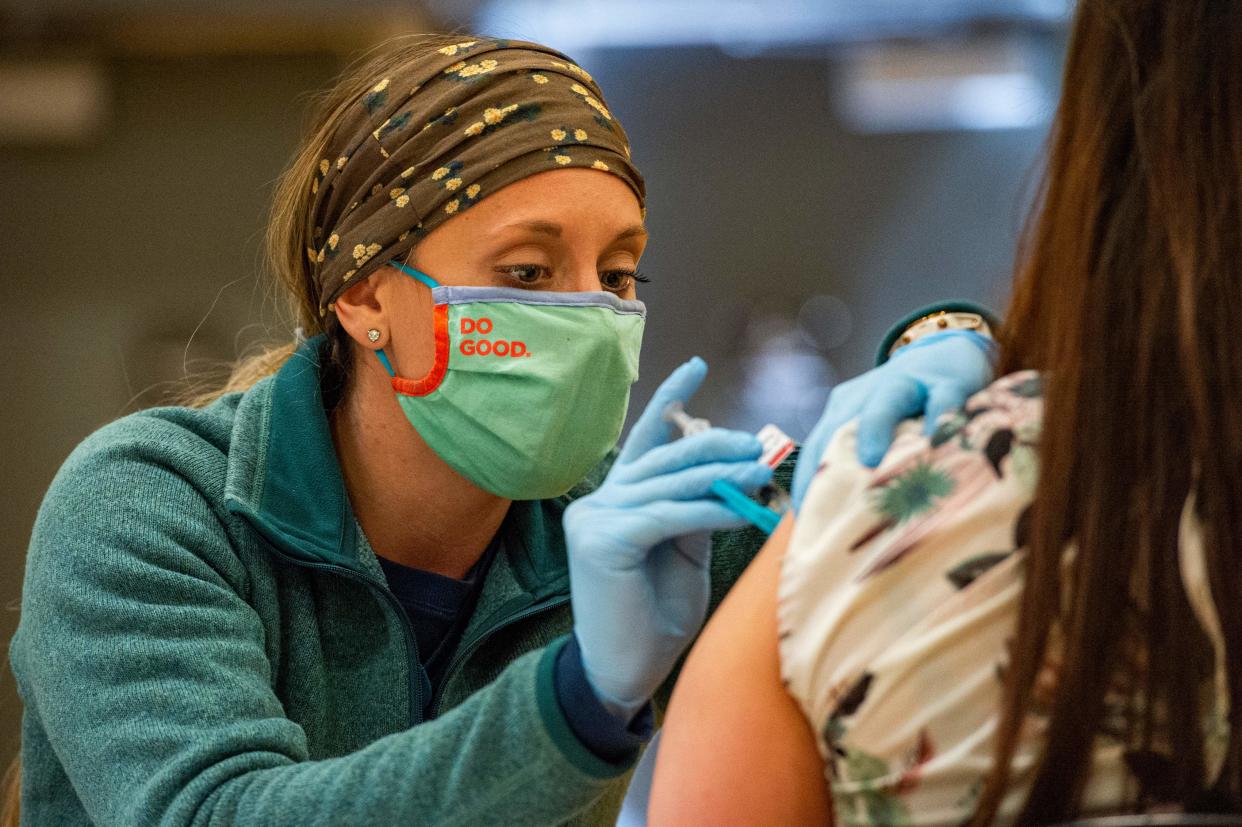Vaccinated Americans 'can now enjoy some more freedoms,' health expert explains
The Centers for Disease Control and Prevention (CDC) announced on Tuesday that fully vaccinated Americans no longer need to wear a mask outdoors in many situations amid the coronavirus pandemic.
“It reflects the fact that fully vaccinated folks have put themselves in such a high safety region that they can now enjoy some more freedoms,” Dr. Mati Hlatshwayo, an infectious disease physician at Washington University School of Medicine, said on Yahoo Finance Live (video above). “That includes being able to gather with small groups outside, being able to go to restaurant patios and eat outside in small groups unmasked. They’ve also given some really helpful informatics and infographics around other examples of what could be done.”

The guidance did come with some caveats — fully vaccinated individuals are still expected to wear masks in certain outdoor settings.
"I want to be absolutely clear, if you're in a crowd... you still have to wear a mask. Even if you're outside," President Joe Biden said during the announcement.
Hlatshwayo praised the decision by the CDC, saying that the guidance “is a big milestone.”
“A year ago, we would have never imagined even having a vaccine, let alone walking into our new normal. But this is what this guidance signals. We know that close to 30% of Americans have received their vaccine. And we know that the closer we can get to herd immunity, the quicker we can get back to our new normal.”

'Do not make assumptions about what you can or cannot do'
The U.S. still has a long way to go before the country reaches herd immunity, which is estimated to be between 75-80%.
The pace of the vaccine rollout has increased substantially. As of April 27, there are 141,751,857 Americans (42.7%) who have received at least one dose of the vaccine and 96,747,454 (29.1%) who are fully vaccinated, according to the CDC.
“I do think we need to continue to encourage folks, to educate them, and to make people understand that the only reason we got here in the first place was because we listened,” Hlatshwayo said. “We listened to the public health measures around masking, social distancing, handwashing, and now we’re seeing more and more Americans get vaccinated. My great hope is that we can get more Americans vaccinated.”
Unfortunately, it was recently reported that more than 5 million Americans have not shown up to get their second doses of either the Pfizer or Moderna vaccines as of early April, which concerned Hlatshwayo.
“You will not get the full protection of the vaccine without taking both doses for vaccines that require both,” Hlatshwayo said. “We know this to be true. Those numbers that we heard at the end of last year, 95% efficacy for a vaccine, is an absolute triumph of science. But you will not get that full benefit without getting both vaccines.”
The three vaccines available in the U.S. — Pfizer (PFE), Moderna (MRNA), and Johnson & Johnson (JNJ) — have all shown to be effective at preventing serious illness and death from COVID-19. But in order to get full efficacy, a person needs to receive both doses (in the case of J&J, one dose) and allow its effects to fully kick in.

“Please do not make assumptions about what you can or cannot do,” Hlatshwayo said. “If something happens and, God forbid, that prevents you from going on the exact day, continue to follow up with your local health department to make sure you can get that vaccine as close to the time.”
She added that “at the end of the day, whatever date you’re given for your second dose, you need to show up and you need to get it done. Otherwise, you’re not going to benefit from the protection that you hope to get from this vaccine.”
'You’ve got to take this data as a whole'
Adding to these concerns is the new skepticism around the safety of Johnson & Johnson’s vaccine.
Production of the shots was halted after the vaccine was linked to a small number of blood clots, but the FDA eventually ruled that the benefits outweighed the risks and allowed the J&J vaccine to continue being used.
“You’ve got to take this data as a whole,” Hlatshwayo said. “If we were to follow case by case, it’s easy to be filled with fear. But the guidance here is absolutely appropriate. Johnson & Johnson is a safe and effective vaccine. Unfortunately, we’ve seen 17 out of over 6.5 million Americans who have taken the vaccine to get clots. This is a very rare side effect, but it can be severe.”

The chances of experiencing a blood clot from the J&J vaccine are estimated to be 4 in 1 million, versus a 39 in 1 million chance of developing a blood clot from COVID-19.
Until these fears around vaccination are cast aside and the country finally reaches herd immunity, Hlatshwayo urged others to follow CDC guidance regarding masking.
“What’s difficult about science and public health measures is that there’s a bridge between one and the other,” Hlatshwayo said. “And part of that bridge is human behavior. We still have the vast majority of Americans unvaccinated, and my hope is that this does not lead to people just being unmasked in general, but that truly, folks who are vaccinated will follow the guidance, just like folks who are unvaccinated will continue to follow the guidance around what they should be doing, which is different.”
Adriana Belmonte is a reporter and editor covering politics and health care policy for Yahoo Finance. You can follow her on Twitter @adrianambellsand reach her at adriana@yahoofinance.com.
READ MORE:
Coronavirus: Elevated U.S. case levels give 'an opportunity to mutate,' doctor warns
Coronavirus: The risk going forward is 'general confidence in vaccines'
‘Unvaccinated folks’ are driving coronavirus surges as American society slowly reopens
Read the latest financial and business news from Yahoo Finance
Follow Yahoo Finance on Twitter, Facebook, Instagram, Flipboard, LinkedIn, YouTube, and reddit.
